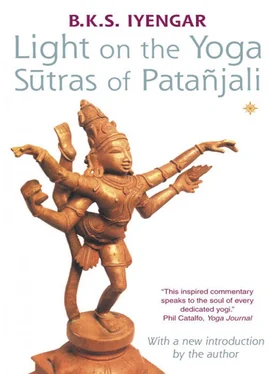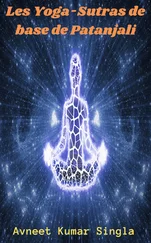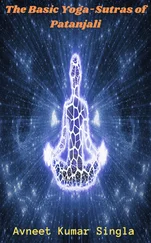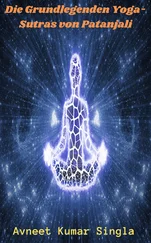The previous sutra explains that the consciousness involves the seer with the objects seen by it, and invites five types of fluctuations which can be divided and subdivided almost infinitely.
Thoughts, when associated with anguish, are known as painful (klista) conditions of the mind and consciousness. For example, a live coal covered with ash appears to be ash. If one touches it, it burns the skin at once. The live coal was in an incognizable, or aklista state. The moment the skin was burned, it became cognizable, or klista. As anguish predominates in pain, the pleasing state cannot be identified with it, though it exists side by side. The pleasure of sex ends in the agony of labour pain at the time of delivery, to be followed by all the cycles of joy, worry and sadness associated with parenthood.
Even highly evolved souls, who have reached a certain spiritual height, as in 1.18 which describes a non-painful, blissful state, are cautioned by Patañjali in 1.19. He warns that, though the yogi remains free while the virtuous potencies continue to be powerful, the moment they fade away he has to strive again, a painful end to the attainment of the spiritual pinnacle. Alternatively, the pains may be hidden, and may appear as non-painful for a long time, until they surface. For example, cancer can remain undetected for a long time until it reaches a painful and tormenting state.
Cognizable pains and anguishes are controlled or annihilated by the practice of yoga, and by willpower. Incognizable pains are prevented from rising to the state of cognition by freedom from desires ( vAsanas ) and by non-attachment ( vairagya ), in addition to yogic sadhana.
In II.12, Patañjali uses the words drsta (visible) and adrsta (unperceived, invisible). These may be compared to klista and aklista. Nature causes the five fluctuations to appear in their affictive klista forms, whereas purusa tends to bring them to the aklista state. For example, the klista form of memory is bondage in psychological time, the aklista form is the function of discrimination. Both the painful and non-painful states can be visible or hidden. The known, visible pains and pleasures can be reduced or eradicated. In painful states the ‘non-pains’ may be hidden, and consequently the virtues are difficult to recognize or perceive. Both these states must be stopped by yogic practice and renunciation. In sutras I.23, 27, 28, 33–39, and in II.29, Patañjali underlines the means of reaching the zenith of virtue, which is freedom and beatitude.
The citta acts as the wheel, while klista and aklista states are like the two spokes of the wheel which cause fluctuations and modulations in one’s self. The vrttis in their klista and aklista manifestations are not separate parallel entities, but feed and support each other. For example, the dullness which is the negative aspect of sleep supports the wrong perception of the other modulations of consciousness, whereas the positive experience of sleep (the passive, virtuous state experienced immediately on waking, when the ‘I’ is silent) gives a glimmer of a higher state, encouraging the efforts of right knowledge and discrimination. If the wheel is at rest, the spokes remain steady, and the citta becomes free from vrttis.
(For afflictions, see I.30, 31; II.3, 12, 16, 17.)
 1.6 pramana viparyaya vikalpa nidra smrtayah
1.6 pramana viparyaya vikalpa nidra smrtayah
| pramana |
valid knowledge, experienced knowledge, correct knowledge which is studied and verified, proof, or evidence |
| viparyaya |
inverted, perverse, contrary |
| vikalpa |
doubt, indecision, hesitation, fancy, imagination, or day-dreaming |
| nidra |
sleep, a state of emptiness |
| smrtayah |
memory |
They are caused by correct knowledge, illusion, delusion, sleep and memory.
These five-fold fluctuations or modifications of consciousness are based on real perception, or correct knowledge based on fact and proof; unreal or perverse perception, or illusion; fanciful or imaginary knowledge; knowledge based on sleep; and memory.
Consciousness has five qualitative types of intelligence: mudha (silly, stupid, or ignorant), ksipta (neglected or distracted), viksipta (agitated or scattered), ekagra (one-pointed or closely attentive) and niruddha (restrained or controlled). Since conscious intelligence is of five types, fluctuations are also classified into five kinds: correct knowledge, perverse perception, imagination, knowledge based on sleep, and memory. These five conscious states of intelligence and five classes of fluctuations may disturb the sadhaka , or help him to develop maturity of intelligence and attain emancipation.
Wrong perceptions ( viparyaya ) are gathered by the senses of perception and influence the mind to accept what is felt by them (as in the story of the six blind men and the elephant). Fanciful knowledge ( vikalpa ) causes the mind to live in an imaginary state without consideration of the facts. Memory (smrti) helps one to recollect experiences for right understanding. Sleep ( nidra ) has its own peculiarity. As a jar when empty is filled with air, so consciousness is empty in sleep. It exists in space, without a place, and is filled with dormancy. In sleep, one has a glimpse of a quiet state of mind, manolaya. This dormant state of mind is felt only on waking. Just as a flower when at rest is in its bud, so the consciousness rests in its bud, the conscience. Correct knowledge (pramana) is direct knowledge from the core of the being. It is intuitive, therefore pure, and beyond the field of intellect.
Direct knowledge leads man beyond the conscious state. This state of consciousness is called amanaskatva.
I.7 pratyaksa anumana agamah pramanani
| pratyaksa |
direct perception |
| anumana |
inference |
| agamah |
traditional sacred texts or scriptural references, a person who is a scriptural authority and whose word can be relied on |
| pramanani |
kinds of proof |
Correct knowledge is direct, inferred or proven as factual.
Correct knowledge is based on three kinds of proof: direct perception, correct inference or deduction, and testimony from authoritative sacred scriptures or experienced persons.
Initially, individual perception should be checked by reasoned logic, and then seen to correspond to traditional or scriptural wisdom. This process involves the enlightened intelligence, or buddhi.
In modern intellectual terms, we take buddhi to be a monolithic entity. This is unhelpful when trying to understand its true role in our lives and in our yogic practice. Let us first separate it from mind, in which brain, whose function is to receive sensory information, to think and to act, has its source. Thinking expresses itself in the form of electro-magnetic waves.
Intellect is more subtle than mind. It is concerned with the knowledge of facts and the reasoning faculty, and becomes discernible only through its inherent quality, intelligence, which is closer to consciousness than to the mind/thought process. Intelligence is inherent in every aspect of our being, from the physical to the blissful. It is non-manifest only in the atman/purusa, the core of being.
The quality of intelligence is inherent but dormant, so our first step must be to awaken it. The practice of Asana brings intelligence to the surface of the cellular body through stretching and to the physiological body by maintaining the pose. Once awakened, intelligence can reveal its dynamic aspect, its ability to discriminate. Then we strive for equal extensions to achieve a balanced, stable pose, measuring upper arm stretch against lower, right leg against left, inner against outer, etc. This precise, thorough process of measuring and discriminating is the apprenticeship, or culturing, of intelligence; it is pursued in the internal sheaths by pranayama, pratyahara and the further stages of yoga.
Читать дальше

 1.6 pramana viparyaya vikalpa nidra smrtayah
1.6 pramana viparyaya vikalpa nidra smrtayah










